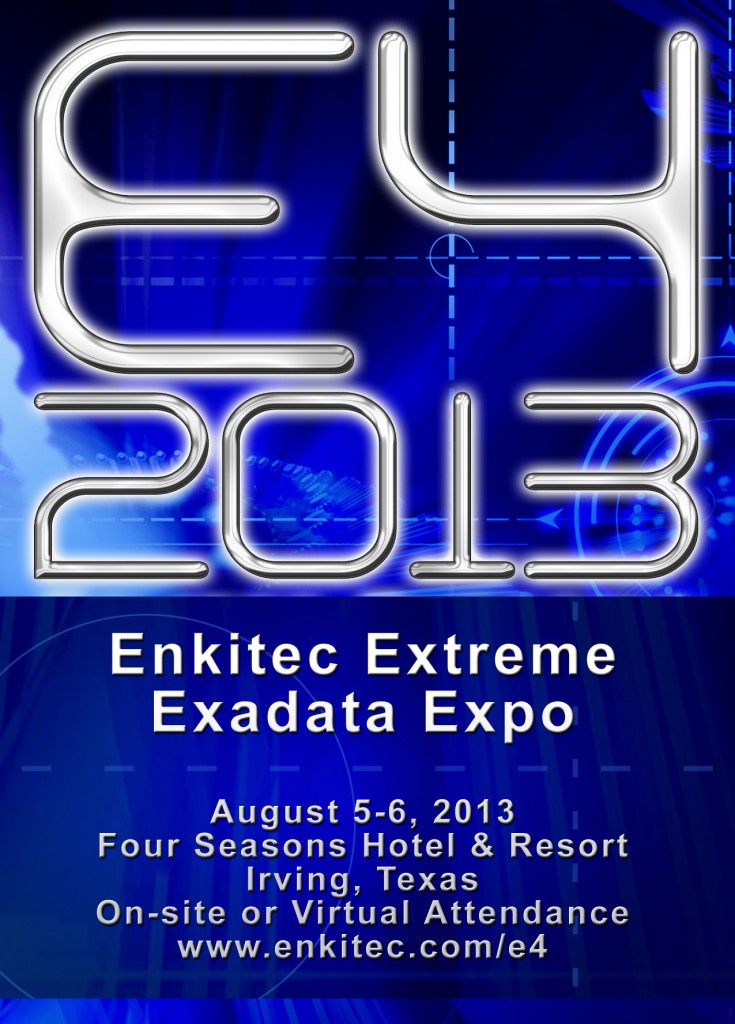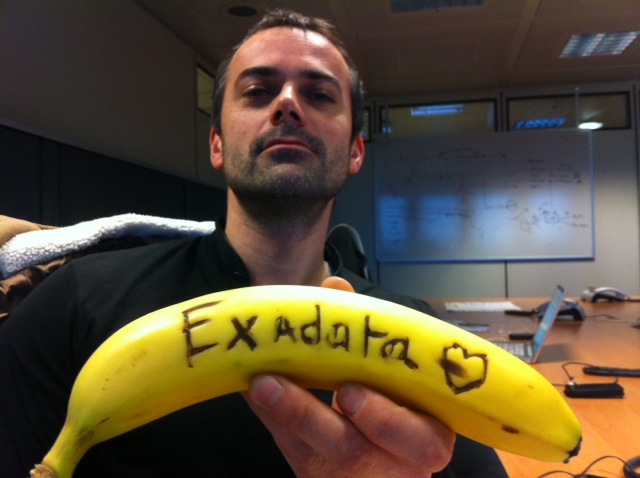Extreme Exadata Expo Speakers Announced
Thanks to everyone that submitted abstracts for our upcoming E4 conference. Unfortunately, there were more quality submissions than we had room for. Maybe next year we should expand the event to 3 days. 🙂 But in the meantime, we have assembled what I believe is an excellent line up of speakers. I’ll just mention a few highlights here:
Tom Kyte will be doing the keynote. Enough said!
Maria Colgan and Roger MacNicol will be doing a 3 hour combined session on smart scans. Maria will attack the topic from the top down (optimizer) point of view (since she is the product manager for the optimizer) and Roger will be attacking it from the bottom up (since he is the lead developer for the smart scan code). This should be an awesome session and Tanel Poder has already said he was going to line up the night before.
Ferhat Sgonul will be talking about Turkcell’s usage of Exadata. Turkcell is one of the earliest adopters of Exadata and has had great success with it over the last several years, so this should be a very interesting case study.
Karl Arao and Tyler Muth will do a joint presentation on visualization techniques for performance data from Exadata environments. The plan is for them to compare and contrast their approaches using the same data set. Tyler usually uses R and Karl likes Tableu – may the best violin chart win.
Tyler Muth will also be doing a deep dive presentation on bloom filters and how they can be offloaded with smart scans. This is a topic about which there is little information, so it should be quite interesting.
Frits Hoogland will be doing a deep dive on how Oracle does multi-block i/o. This is of special interest with regard to Exadata because the direct path mechanism for doing multi-block i/o is a requirement for enabling smarts scans. So understanding how it works is one of the keys to getting the most out the platform.
Sue Lee (product manager for resource manager) will be doing a session on how to deal with mixed workloads. I’m really interested in this session as IORM and DBRM are critical for managing Exadata, particularly when it is used as a consolidation platform.
There are many other well known speakers including Martin Bach, Andy Colvin, Gwen Shapira, Mark Rittman, Tim Fox and Tanel Poder.
Here’s a link to see the complete line up of E4 speakers.
While we’re on the subject, I should mention that there will be several talks on hadoop related topics and the increasingly expanding role it is playing in our industry. The idea of pushing the work to the storage is not unique to Exadata. It is also the main driver behind hadoop. So I’m extremely pleased to announce that Doug Cutting will be speaking at E4 as well.
So that’s all for the marketing related stuff on E4. I hope you can join us in Dallas.





